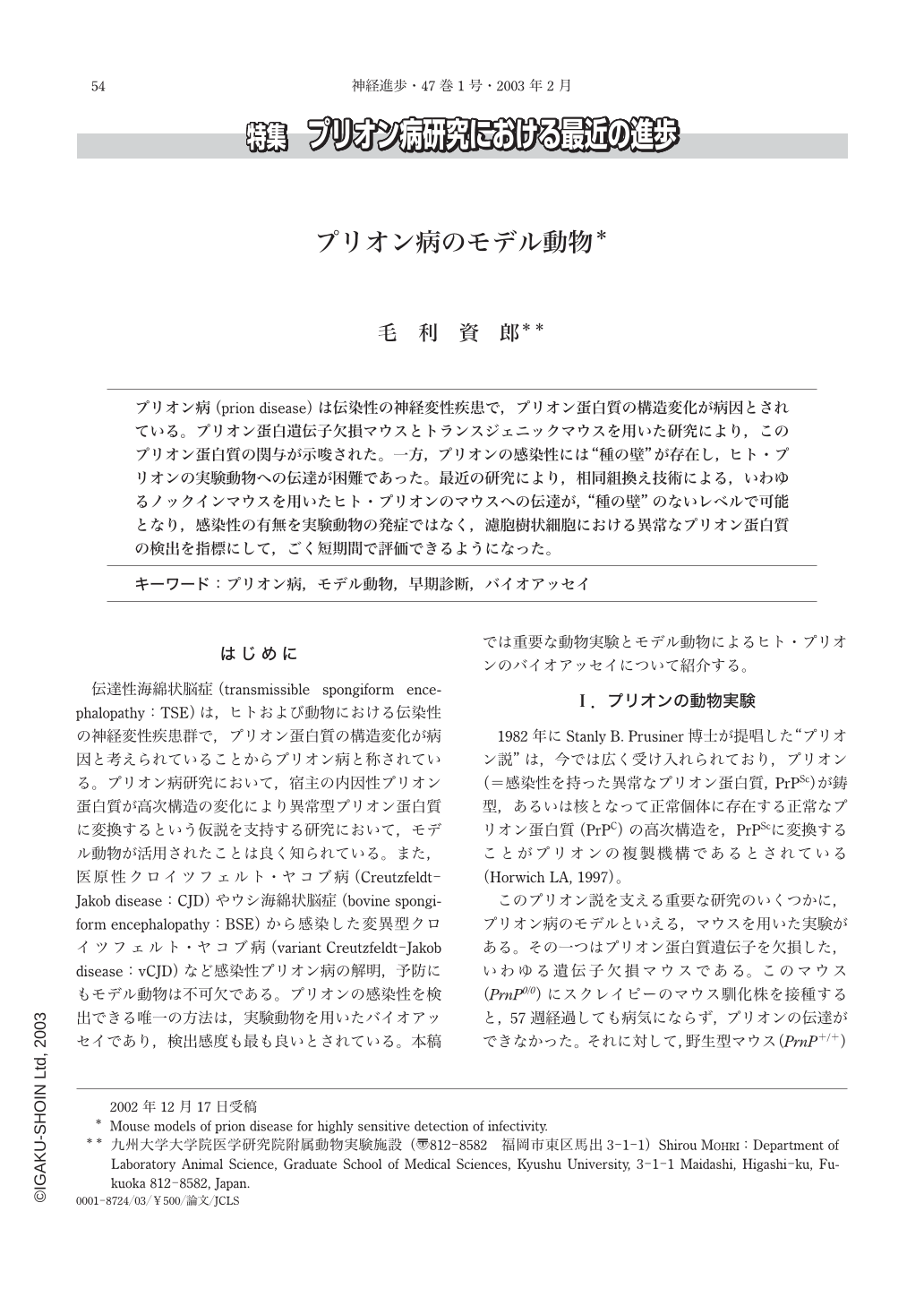Japanese
English
- 有料閲覧
- Abstract 文献概要
- 1ページ目 Look Inside
プリオン病(prion disease)は伝染性の神経変性疾患で,プリオン蛋白質の構造変化が病因とされている。プリオン蛋白遺伝子欠損マウスとトランスジェニックマウスを用いた研究により,このプリオン蛋白質の関与が示唆された。一方,プリオンの感染性には“種の壁”が存在し,ヒト・プリオンの実験動物への伝達が困難であった。最近の研究により,相同組換え技術による,いわゆるノックインマウスを用いたヒト・プリオンのマウスへの伝達が,“種の壁”のないレベルで可能となり,感染性の有無を実験動物の発症ではなく,濾胞樹状細胞における異常なプリオン蛋白質の検出を指標にして,ごく短期間で評価できるようになった。
はじめに
伝達性海綿状脳症(transmissible spongiform encephalopathy:TSE)は,ヒトおよび動物における伝染性の神経変性疾患群で,プリオン蛋白質の構造変化が病因と考えられていることからプリオン病と称されている。プリオン病研究において,宿主の内因性プリオン蛋白質が高次構造の変化により異常型プリオン蛋白質に変換するという仮説を支持する研究において,モデル動物が活用されたことは良く知られている。また,医原性クロイツフェルト・ヤコブ病(Creutzfeldt-Jakob disease:CJD)やウシ海綿状脳症(bovine spongiform encephalopathy:BSE)から感染した変異型クロイツフェルト・ヤコブ病(variant Creutzfeldt-Jakob disease:vCJD)など感染性プリオン病の解明,予防にもモデル動物は不可欠である。プリオンの感染性を検出できる唯一の方法は,実験動物を用いたバイオアッセイであり,検出感度も最も良いとされている。本稿では重要な動物実験とモデル動物によるヒト・プリオンのバイオアッセイについて紹介する。
Prion disease is an infectious neurodegenerative disease which is assumed to be caused by the conformational change of the prion protein(PrP). Active participation of this protein were suggested by the research using PrP gene knock-out mouse and the transgenic mouse. On the other hand, “Species barrier” existed in infection of the prion, and the transmission of human prion to laboratory animal was difficult. The transmission of human prion to so-called knock-in mouse established by the homologous recombinant technology became possible at the level without “Species barrier” by a recent research. Infectivity of human prion came to be appreciable with short time by the detection of an abnormal PrP in not laboratory animal's appearance of disease but in follicular dendritic cell.

Copyright © 2003, Igaku-Shoin Ltd. All rights reserved.


